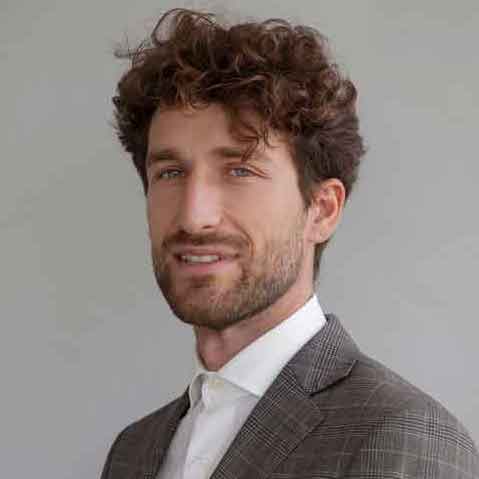I turned LinkedIn into an opportunity to engage with climate change skeptics. Here’s what I learned.
Scientific evidence is clear that greenhouse gas emissions from human activities are warming the Earth. That extra heat is changing our climate in ways that threaten the existence of people, plants, and animals.
Sadly, the transition away from fossil fuels isn’t happening fast enough. Climate change skepticism and denialism are a big part of the reason why.
Skepticism is when someone has doubts about climate change but is willing to consider new evidence. Denialists also reject climate change, but refuse to consider new evidence.
Here are some discouraging stats about climate change beliefs in the US, the largest emitter of greenhouse gases globally (statistics from Yale University’s 2023 public opinion survey):
-
24% of people think scientists disagree on whether global warming is happening.
-
30% of people don’t think climate change is caused by human activities.
-
56% of people don’t believe they’re experiencing global warming’s effects.
Even more worrisome is the fact that climate change skeptics are organizing. They are adopting collective declarations and running newspapers, think tanks, and lobby groups. Although climate skepticism has little, if any, empirical support, the strength of their message is growing.
This is all cause for concern. If people don’t believe that climate change is real, human-caused, and problematic, then they won’t want to invest in solutions.
My Connection to Climate Skepticism
I encounter a lot of climate skepticism in my daily life. I study regenerative food systems, where I meet farmers and agronomists who have their doubts about climate change. I also teach sustainability, circularity, and regeneration to MBA students and executives, who often express doubts on the urgency of climate action.
I sometimes feel defensive, or even angry, in these conversations, thinking: “How could they believe that!?” But then, curiosity sets in, and I ask: “Why do they believe that? And what could I say to help them understand the existing evidence?”
There’s lots of good social science research on climate change skepticism and the initiatives to fight misinformation. But I didn’t just want to read about these issues. I wanted to experience them. So, with the help of my colleague, Dr. Sourabh Jain, I turned to a source of climate skeptics close at hand: LinkedIn.
Our Journey Into Climate Skepticism
Usually, thanks to LinkedIn’s algorithm, I see posts expressing views similar to my own. Sourabh and I decided to push outside our algorithmic “bubble” to encounter people with different views. We hoped we would learn who climate skeptics are, how they engage, and what responses are effective.
Here’s what Sourabh and I did over a six-month period:
-
We “liked” posts and comments we considered inaccurate or controversial, based on our knowledge of climate change. Our behavior “cheated” LinkedIn’s algorithm and pulled us into unfamiliar bubbles, leading to more connections with skeptics.
-
For four months, we observed dozens of conversations. We took notes on what the comments said and who posted them.
-
Then, I started to engage in these threads. I focused on countering incorrect comments with evidence from peer-reviewed, observational research. I tried to be open to considering evidence that challenged my worldview or identified the limits of scientific research. Over two months, I talked to 30 people. Each exchange lasted 50 to 200 messages.
This article describes what we experienced, and my personal reflections and recommendations.
1. How Climate Skeptics Engage
In the beginning, I wasn’t sure what to expect. But I quickly noticed that each conversation seemed to move through the steps below.
Step 1: A skeptic comments that climate change is fake or humans aren’t causing it.
When someone made a LinkedIn post about the climate crisis, a skeptic would respond in the comments, usually with a personal insult and a ‘new discovery’ that seemed to disprove human-caused climate change.
Here are a few examples of posts and comments:
Step 2: I shared an evidence-based counterargument.
I replied to the skeptical comment, sharing evidence from recent articles in peer-reviewed journals, like Science and Nature. I included information on the research methods and a link to the article, for additional transparency.
Step 3: More skeptics joined, and the exchange continued.
As more skeptics joined the conversation, they provided alternative explanations for research findings (often accompanied by an insult or a laugh emoji on my comments).
Each time I heard a new opinion, I reviewed academic research to explore its validity and shared my findings – which usually triggered a new skeptical argument. The cycle continued, often until we had covered the causes, consequences, and potential solutions of climate change.
Step 4: Conversations closed with personal attacks (and occasionally appreciation).
Conversations often ended with skeptics insulting me, my professional standing, or my institution. Most disregarded the science I shared, although 5-10% said that they appreciated the resources and my passion in explaining the subject. Some of the individuals with whom I had several exchanges across different threads gradually became less aggressive and more welcoming of alternative thoughts and views.
2. Who Climate Skeptics Are and What Motivates Them
Conservative white men who say they understand global warming very well are the most likely set of people to deny climate change. That’s what previous research finds, and what we experienced as well.
According to LinkedIn data, the folks that we observed and engaged with were mostly white males over 50. Most of them were educated, commonly with an undergraduate degree in the social sciences (sociology, geography, or political science), although some were geologists with post-graduate degrees. They tended to have middle or senior management jobs in traditional sectors like oil & gas, transportation, and financial services. Some were entrepreneurs.
Why might these demographics connect to climate skepticism? Currently, the majority of senior managers in many business sectors are white men. Energy sector executives, for example, include only 26% women and 20% racial minorities. More white male leaders means white men have more to lose from changes to the status quo, making them more likely to downplay alternative solutions like renewable energy. White men also have higher risk tolerance, making them more likely to downplay climate risk.
Education is another important factor. Educated people tend to align with their political party’s position on key issues – and climate action challenges conservative values of business growth and minimal government interference. Educated individuals also have a stronger ability to selectively choose arguments or data to support their position.
3. People Expressed Beliefs Associated With “Old Denial” and “New Denial”
Recent research finds climate skeptics shifting from ‘old denial’ (global warming isn’t real; human emissions aren’t causing it) to ‘new denial’ (climate scientists disagree; the impact of global warming is positive; climate solutions won’t work). So, I was expecting to encounter mostly “new denial”; but that wasn’t my experience. In each conversation, my fellow discussants seemed to reject all of what Dr. Ed Maibach calls the five climate change truths:
I was also surprised by the varied beliefs in each of these categories. For example, related to the cause of global warming: some said it was increased solar activity; others said it was a change in Earth’s orbit; others said it was changes in the flow of the Earth’s core. (In an upcoming article, I will share the evidence I found debunking these arguments).
4. Discussing Details Can Reduce Skepticism
These discussions reminded me how much small details matter, especially on controversial and polarized issues. The people I spoke with often had valid questions and concerns, which aren’t addressed by simplified, black and white messaging.
While many skeptics ignored the science I shared, a small percentage were keen to explore the details (and many others silently read our posts). They wanted to discuss topics like extreme events decreasing in frequency but increasing in intensity, or how renewable energy has limitations but can still be deployed reliably in residential, commercial, and industrial applications.
When scientists and government leaders gloss over the details, they disregard legitimate concerns and erode public trust. Public health communications during the pandemic taught us a similar lesson. In places that enforced long-term school closures, it was taboo to suggest that learning would be negatively affected; but we now know that school closures did impair academic and social learning.
The public needs to be able to express questions and concerns and have them addressed in more nuanced ways. I believe climate change and other polarized issues would benefit from more sophisticated, engaged, and sustained educational efforts.
5. Consider Avoiding Controversial Terms, Like “Climate Change”
In my LinkedIn conversations, there was a lot of pushback to the terms ‘climate change’ and ‘climate crisis’. But when I approached my conversations differently, I got a different response.
I tried talking about the non-climate problems caused by fossil fuels. For example, burning gasoline releases fine particulates that get into people’s lungs and cause respiratory illness, like asthma. The direct health implications of fossil fuels are another good reason to stop using them, and few people I talked to disagreed.
Similarly, I tried reframing climate solutions. Instead of emphasizing emissions reductions (which can trigger sensitivity for skeptics), I spoke about other benefits of change efforts. For example, I study regeneration, which describes any process that improves the health of human or ecological systems. Regeneration can both slow down climate change and create other benefits for people. In regenerative agriculture, for example, soil sequesters more carbon, which slows down global warming. The same practices also lead to healthier food, more biodiversity, and protection against droughts. I found that emphasizing these benefits reduced pushback in my conversations.
How I Changed From Engaging With Climate Skeptics
Engaging with climate skeptics was sometimes stressful. But I learned a lot too.
I got better at navigating emotionally-charged conversations. My comments were often met with ‘laugh’ emojis or insults like, “those who can’t do, teach,” or, “get out of your ivory tower,” or, “you live in fancy, communist Canada.” I tried to stay calm and hold space for people’s anger.
The experience helped me consider people’s experiences related to climate change – perhaps their fear of losing a job or some aspect of their way of life. Thinking about these losses, I often felt compassion. I’d probably feel the same way if I had to make big changes. Compassion helped me stay calm and open to the ideas being shared.
I also learned a lot about climate science as I tried to address points raised in the conversations. I went into this process open to questioning my own understanding of climate change. But the evidence I gathered actually strengthened my beliefs. Ultimately, the scientific evidence is very clear: climate change is happening, it’s caused by humans, it will likely have devasting impacts, and there are complex but workable solutions.
Conversation Offers Hope
I believe in the power of conversation, data, and science. I think it’s important to talk about the nuances of climate change impacts and solutions. Conversations can make the details clearer and plant seeds of change.
Based on LinkedIn stats, 50-70 people read each back-and-forth I participated in. About 5% of those people reached out to me privately, genuinely seeking evidence and explanations. I directed them to the original sources and to natural science experts. This positive exchange reaffirmed for me the importance of researchers working closely with people in the community, to create and mobilize knowledge on topics people care about.
I hope this article inspires you to engage with people who have different views on climate change. I’d like to hear how your exchanges go! (You can email me here). And if you’re looking for evidence to address climate myths in your own conversations, subscribe to the NBS newsletter and watch for my upcoming literature review findings.






Add a Comment
This site uses User Verification plugin to reduce spam. See how your comment data is processed.This site uses User Verification plugin to reduce spam. See how your comment data is processed.